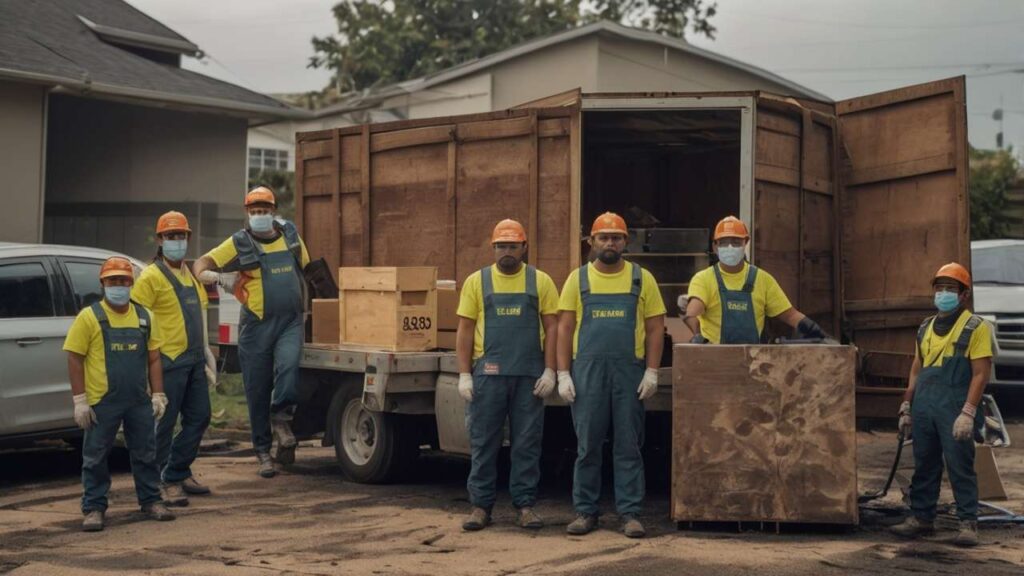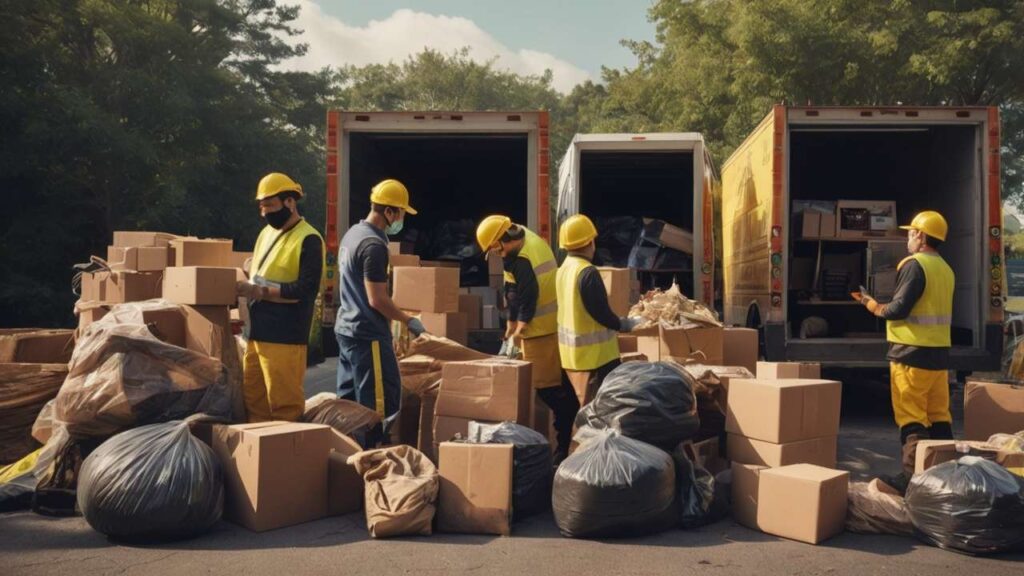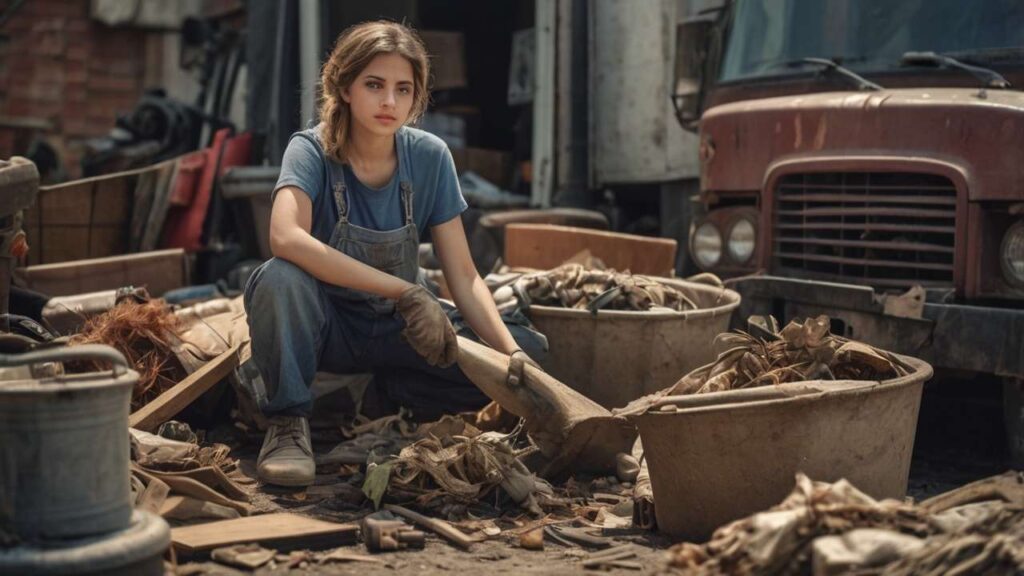Most people think junk disappears once it’s loaded onto a truck, but that’s not true. What happens to junk after pickup is actually an entire process that touches recycling centers, local charities, and even specialized scrap facilities. The second life of junk is often more interesting than its first—because professional junk haulers don’t just dump everything into landfills. They recycle, repurpose, and donate usable items, which makes responsible junk disposal more than just a service; it becomes part of a bigger eco-friendly movement.
I’ll be honest: I used to assume that all old furniture, broken electronics, and boxes of forgotten stuff went straight to the dump. But after hiring a trusted junk removal service in North Carolina, I learned how much actually gets diverted from waste. Professional crews explained to me that their donation partnerships with local charities can give furniture or clothing a new home, while recycling centers handle scrap metal and electronics. That kind of transparency was refreshing, and it showed me why eco-friendly junk removal practices are worth supporting.
For readers here in North Carolina, choosing a professional, reliable hauler can make a bigger difference than you might think. Many companies proudly share their waste diversion rate, which shows how much they recycle or donate instead of sending to landfill. According to one expert at Pro Service Tips, “Customers are often shocked when they learn that over 60% of their junk avoids the landfill entirely. Repurposing and recycling are now standard practices in the industry.” That kind of professional insight made me rethink junk removal as more of an environmental responsibility than just a weekend chore.
- Donation Partnerships: Giving Junk a New Purpose
- Recycling Processes: Beyond Just Sorting
- Repurposing: Creativity Meets Sustainability
- Why Eco-Friendly Junk Removal Matters
- Related Insights That Connect the Bigger Picture
- Future-Facing Conversations: What Else Should We Be Asking?
- Case Study: A Real Example in North Carolina
- FAQs
Donation Partnerships: Giving Junk a New Purpose
The second life of junk often begins with donations. Furniture that still has life left—like a sofa with a bit of wear or a dining set that just doesn’t match someone’s home anymore—can be redirected to families in need. In my area, I’ve seen trucks drop off gently used items at local shelters and thrift stores. It’s not only compassionate but also practical, as it keeps bulk items out of landfills.
Charities often work hand-in-hand with junk haulers, ensuring that clothing, toys, and household goods reach people who can use them. This is especially important during estate cleanouts, where entire households of items are cleared. I once helped a friend during an estate downsizing, and knowing that much of the furniture went to a women’s shelter made the emotional process easier. This is what makes junk removal feel less like “getting rid of things” and more like redistributing resources responsibly.
Recycling Processes: Beyond Just Sorting
Not all junk is donation-ready. That’s where recycling comes in. Professional junk removal teams are trained to separate items like electronics, scrap metal, and plastics. Take scrap metal recycling for example: old bed frames, broken appliances, and even rusty tools are transported to facilities that melt them down for reuse.
Electronic waste—things like TVs, game consoles, or laptops—gets even more complicated. They often contain harmful chemicals, but specialized facilities know how to safely extract valuable metals like copper and gold from their circuits. This kind of responsible junk disposal prevents hazardous materials from seeping into soil and water. If you’ve ever wondered how to legally dispose of e-waste, resources like this guide provide clear, professional advice that anyone can follow.
Repurposing: Creativity Meets Sustainability
Some junk isn’t recycled or donated—it’s repurposed. Old wood furniture can be broken down and reused as raw material for new projects. I once saw a coffee table made entirely from reclaimed wood gathered during a junk cleanout. Even old bricks, tiles, and concrete chunks from renovation projects can be reused in landscaping.
Professional junk haulers sometimes work with local craftsmen who look for reusable materials. It’s an interesting collaboration between industries that keeps materials circulating instead of wasted. And to be honest, I find it pretty cool that a chunk of “junk” could come back as part of a new park bench or community art project.
Why Eco-Friendly Junk Removal Matters
Landfills are filling up faster than ever, and irresponsible junk disposal makes the problem worse. Choosing professional junk removal that prioritizes recycling and donations can significantly reduce environmental damage. In North Carolina, where waste management regulations are tightening, this practice is not just “nice”—it’s becoming necessary.
And there’s also the personal satisfaction. Knowing that the old dresser you couldn’t stand anymore is now helping a college student furnish their apartment makes the process feel positive instead of wasteful. Responsible junk disposal becomes part of a bigger story of community and sustainability.
Related Insights That Connect the Bigger Picture
Learning about the second life of junk also got me exploring related topics. For example, The Hidden Cost of Clutter looks at how disorganization in our homes adds stress and reduces productivity. That article helped me realize that junk removal isn’t just about the environment—it’s also about reclaiming mental space.
Another post, Professional Junk Removal vs. DIY, really opened my eyes to the cost and time breakdown. I used to think renting a truck and doing it myself was cheaper, but after factoring fuel, disposal fees, and time off work, I saw how professional services were not only more efficient but surprisingly cost-effective.
And for those dealing with tricky items like electronics, Beyond the Trash Can: How to Legally Dispose of E-Waste and Hazardous Household Junk provides guidance that aligns perfectly with the eco-friendly focus of the second life of junk.
Finally, estate downsizing brings in the human side. Compassionate Cleanouts shows how professional haulers handle the sensitive mix of grief and practicality during estate cleanouts. That personal touch, combined with eco-responsible disposal, highlights why hiring trusted experts really matters.
Future-Facing Conversations: What Else Should We Be Asking?
The second life of junk is just the beginning. Future discussions could go deeper into how artificial intelligence helps junk haulers improve sorting accuracy, or how blockchain technology is starting to track recycling chains for transparency. Local initiatives might even measure neighborhood waste diversion rates, turning eco-friendly junk removal into a community achievement.
Think also about construction debris—how drywall, cement, and tiles can be recycled in large quantities. Or the potential of textile recycling, which could prevent millions of pounds of clothing from clogging landfills each year. These aren’t distant ideas; they’re emerging conversations that show junk removal is about more than just trucks and dumps. It’s an evolving industry shaping a more sustainable tomorrow.
Case Study: A Real Example in North Carolina
One of the most inspiring stories I came across was a professional junk removal project in Charlotte. A family clearing out their basement found themselves with over 1,200 pounds of mixed junk. The professional hauler reported that 70% of it was recycled or donated. The furniture went to Habitat for Humanity, the electronics were processed through a certified e-waste recycler, and the scrap metal was sold back into the local economy. Not only did this reduce landfill waste, but the family also received a donation receipt for tax deductions. That’s the second life of junk in action—financial, social, and environmental benefits all at once.
FAQs
1. What happens to junk after pickup by professional haulers?
Most professional haulers sort items for donation, recycling, and repurposing before sending anything to landfills. Usable items go to charity, while materials like scrap metal and electronics are processed at specialized facilities.
2. Why is eco-friendly junk removal better than regular disposal?
Eco-friendly junk removal reduces landfill waste, supports local charities, and promotes recycling. It’s more sustainable and can even give you tax benefits through donation receipts.
3. Can professional junk haulers handle hazardous waste?
Some can, but not all. Items like paint, chemicals, and batteries often need special disposal methods. Always ask your hauler, or check resources like Pro Service Tips for guidance on safe handling.
The second life of junk proves that what we throw away doesn’t have to be wasted. Through donation partnerships, recycling processes, and creative repurposing, professional junk removal transforms clutter into opportunity. Choosing a reliable, trusted junk hauler in North Carolina is more than convenience—it’s a commitment to environmental responsibility and community care.
If this article gave you a new perspective, share it with friends and family on social media using the buttons below. Sometimes the small step of calling a professional junk removal service can make a surprisingly big difference.
For more insights, check out our top expert recommendations in North Carolina, explore the junk removal category, or visit Pro Service Tips for professional, trusted guidance.



